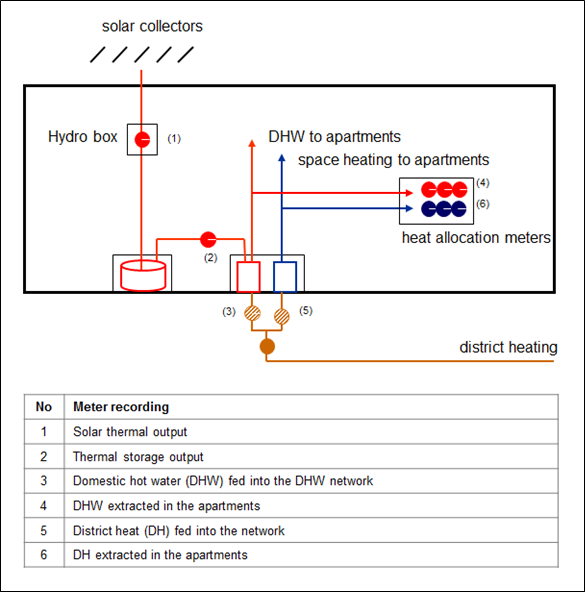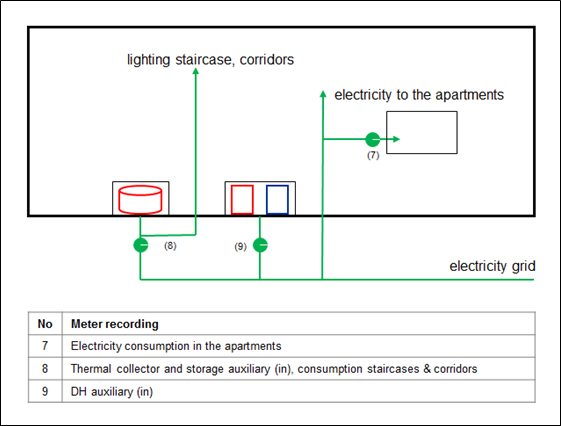
Location
Description
The Oborishte district is one of the older parts of the city of Sofia, the capital of Bulgaria. Within Oborishte, there is a mix of residential, commercial and office functions, as well as a mix of building types (pre-war detached houses and multi-family apartment blocks). This action envisages the renovation of five apartment blocks that are rather typical for building practice both in Sofia and Bulgaria around 1970. The buildings are prefabricated apartment buildings with 7 to 8 levels, locally known as ‘panel blocks’. Thermal characteristics of the constructions are very poor, large parts of the glazing are in a bad condition. The same can be said for the commonly used parts of the blocks.
Documents
Site facts and figures
- Estimated population involved: 2,250
- Approx. geographical area coverage: Information will follow
- Approx. energy saving: 225 MWh/y electricity and 1,829 MWh/y heating
- Approx. energy from RES: 372 MWh/y heating
Technologies
Technologymix
As part of the CONCERTO activities four apartment blocks (Picture 1 + 2) have been refurbished, which are rather typical for building practice both in Sofia and Bulgaria between 1960 and 1970. The buildings have been constructed from prefabricated elements and have 7 to 8 levels, locally known as ‘panel blocks’.
The energy demand of the blocks was reduced drastically by improving the building envelope (replacing windows and adding insulation), which will save up to 70% energy for space heating. Also overheating is a serious problem in Bulgaria. Sun shading devices reduce the overheating problem and thus prevent the purchase of air-conditioning units. Thirdly special attention will be paid to the reduction of the household electricity consumption, which is rapidly growing in Bulgaria nowadays.
The domestic hot water system was separated from the district heating system, which improved the overall efficiency of the network considerably. On the roof of the buildings solar thermal collectors with a total surface of 180 m² have been installed (Picture 3 + 4). Furthermore, the insulation of the domestic hot water piping and the installation of water saving taps contribute to lower energy consumption in the buildings.
Besides the residential buildings, two tertiary buildings will be refurbished in the framework of the STACCATO project. The roofs of a kindergarten and a hospital will be insulated, their existing windows exchanged with new low energy glazing; heat recuperation systems and building automation systems will be implemented. Furthermore, in total 420 m² of solar collectors and 120 kWp PV will be installed on the kindergarten and the hospital.
In the framework of the CONCERTO Initiative, four residential building blocks from the 1960s and 1970s have been refurbished and equipped with solar thermal collectors. In average, 2.45 m² of solar thermal collector area were installed per flat (mostly occupied by 2 perso
s) to cover large parts of the domestic hot water demand of the building. Initial calculations planned a collector area of 2.0 m² per flat but in order to secure the supply with domestic hot water the collector area was extended to 2.45 m².
In the old system, the domestic hot water was generated via heat exchangers connected to the local district heating network; in course of the refurbishment the domestic hot water system was separated from the district heating and connected to the solar thermal collectors. In case, the collectors do not deliver enough hot water, the district heating can still reheat the water before it is used in the flats (Figure 1). The online monitoring tool shows exemplarily for one of the refurbished building blocks in Oborishte the temperatures of the cold water input into the storage and the hot water output; furthermore, the amount of available energy in the storage is displayed.
The metering points for the heating, domestic hot water and electricity consumption in the residential buildings are displayed in Figure 2 and Figure 3.
Besides using renewable energy sources for the generation of the hot water, energy losses were reduced by insulating the piping and the hot water consumption was reduced by the installation of water saving taps.

Figure 1 – Online monitoring scheme of the solar thermal heat gains and the water temperatures in the residential building Asen Zlatarov 11

Figure 2 – Position of meters in the heating and domestic hot water system in the refurbished buildings in Oborishte, Sofia

Figure 3 - Position of meters in the electricity system in the refurbished buildings in Oborishte, Sofia
Lessons learnt
For the STACCATO-project a report has been compiled on policy issues that relate to EU/national, municipal, utility and housing association policies. It compares the situation in the Netherlands, Bulgaria and Hungary. It can be found here.
Another report covers economic aspects, including qualitative and quantitative data on the effect of the STACCATO project on the households’ budget for energy and the financials of the investments in RES and RUE in Amsterdam Noord, Obuda and Sofia. It can be found here.
A report on the social aspects, including quantitative data on households with changed attitudes towards RES and RUE has also been prepared, again covering the situation in the three partnering sites. It can be found here.
The CONCERTO approach
Sofia follows a comprehensive approach, encouraging residents to organize themselves in homeowners’ associations, and providing a thorough programme of external insulation and window renewal.
Building aspects
- Installed Renewable Energy Sources
- solar thermal collectors
Thematic Field
- New Building(s)
- Refurbished Building(s)
